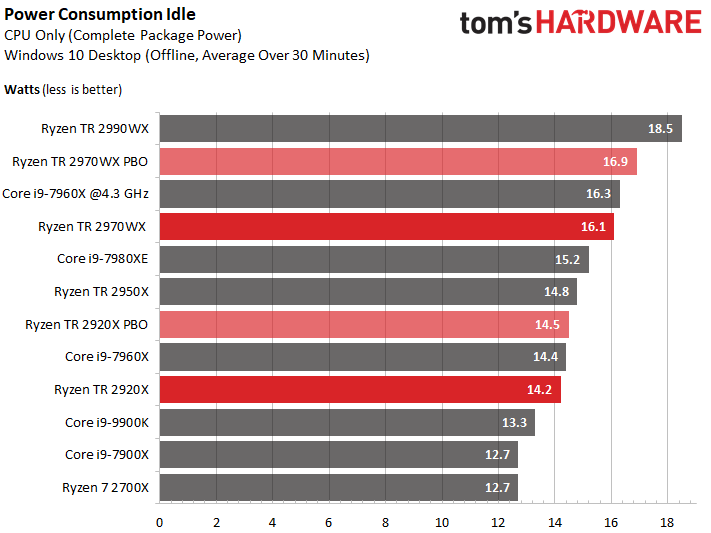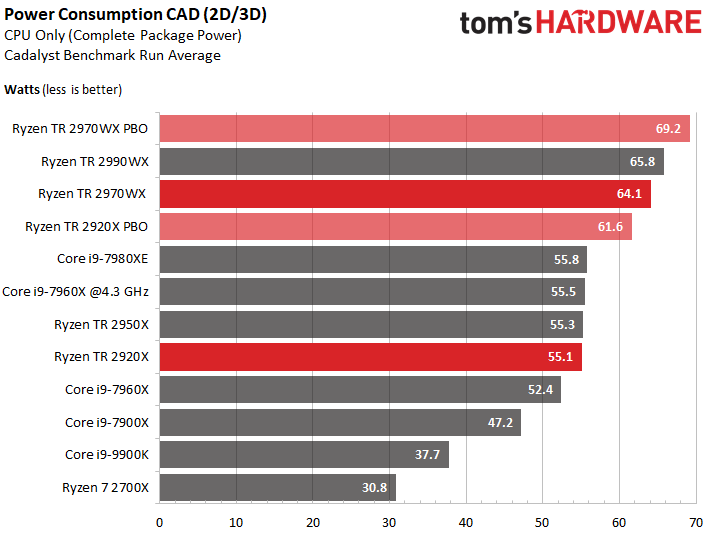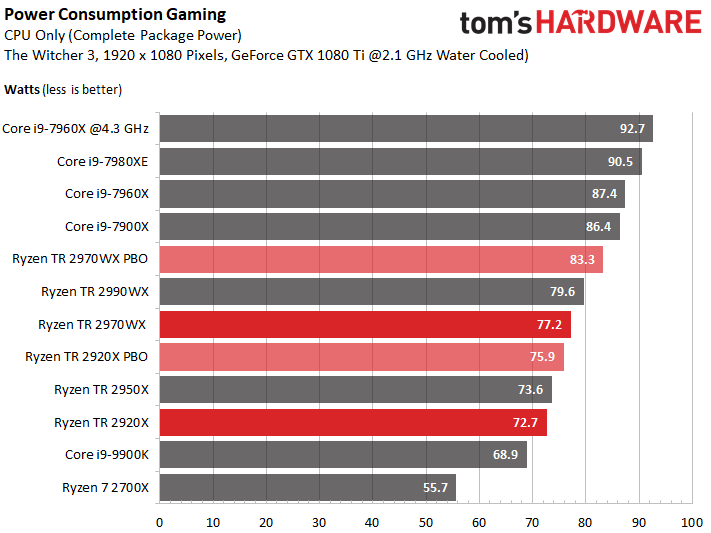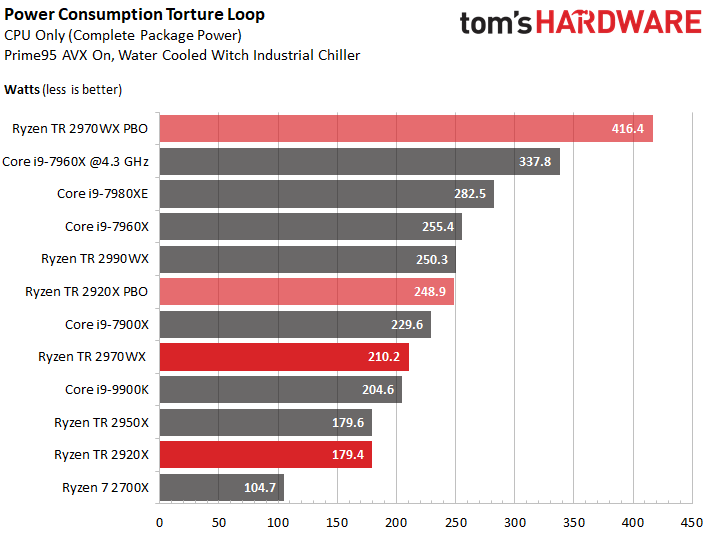AMD Ryzen Threadripper 2970WX Review: 24 Cores on a Budget
Why you can trust Tom's Hardware
Power Consumption
Interestingly, AMD reduced the idle power consumption of its second-gen Threadripper CPUs a bit. This is certainly motherboard-dependent, so be sure you're using the latest BIOS on your X399-based motherboard.
Just be ready for Windows 10 to bounce you back to 25-40W as background processes kick on and off (and particularly with PBO enabled for additional performance).
Ryzen Threadripper 2920X with PBO enabled hits clock rates as high as 4.3 GHz in our CAD workload, so power consumption spikes as well. The 2970WX is similar in that its high boost frequency results in a >64W measurement.
Our Witcher 3 benchmark is great for GPU power consumption comparisons. But it's less enlightening when we run it across different host processors because the underlying engine doesn't use enough cores. Assassin's Creed Odyssey is better about utilization, causing Threadripper's power to spike in excess of 100W. But that game's averages are far from reproducible, forcing us to keep it on the shelf.
Prime95 certainly isn't representative of an everyday scenario, but it's great for measuring peak theoretical power consumption. Some real-world applications pull even more power. For instance, a real Blender workload drives the 2970WX up to 230W, while we only measured 210W with Prime95! The same applies when we switch on PBO: Blender coaxes 447W from the Ryzen Threadripper chip compared to 416W in Prime95.
The smaller Ryzen TR 2920X is slightly different. It pulls 160W during the Blender workload, whereas Prime95 shows a power consumption of 180W. Activating PBO increases the delta: we measure 200W during the Blender test and 249W in Prime95. We can't explain why both CPUs react differently, but their results are reproducible.
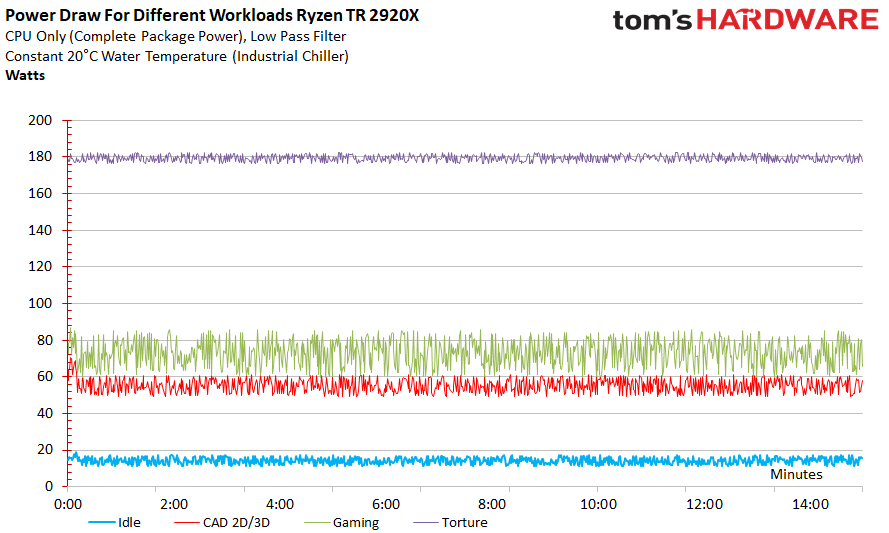
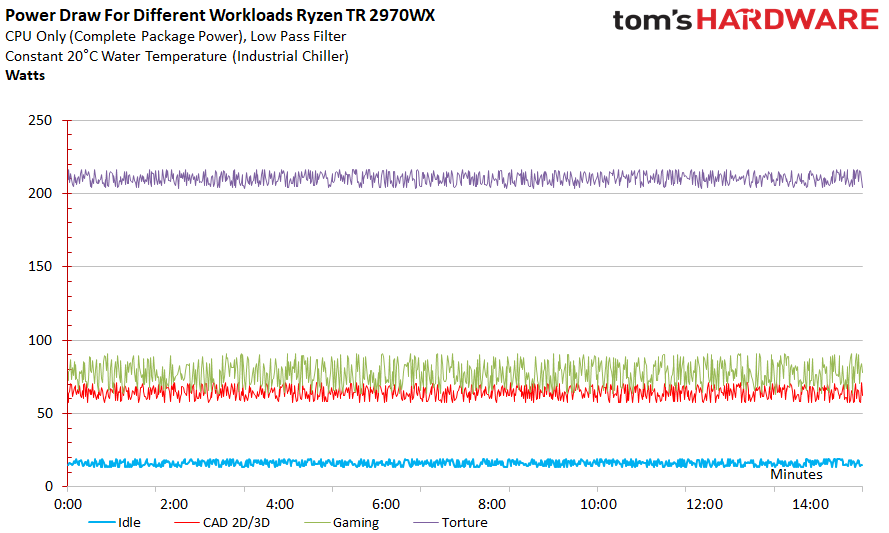
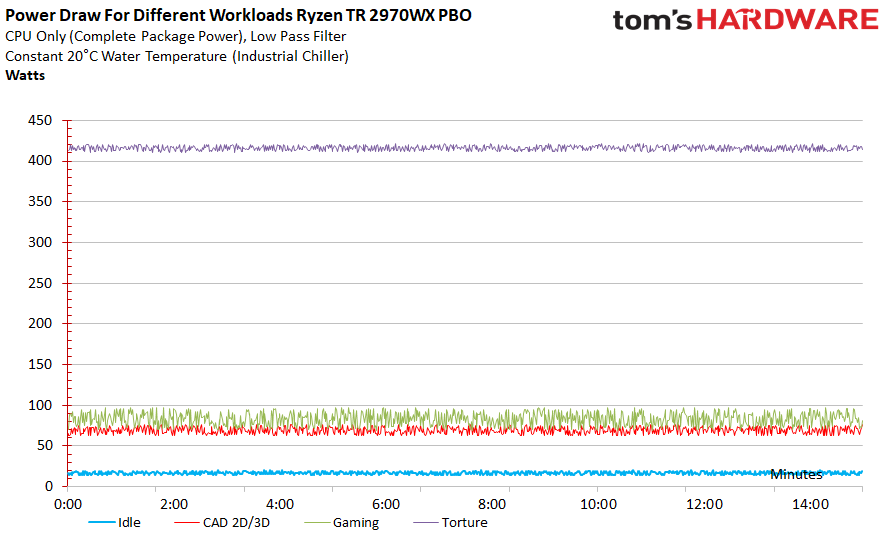
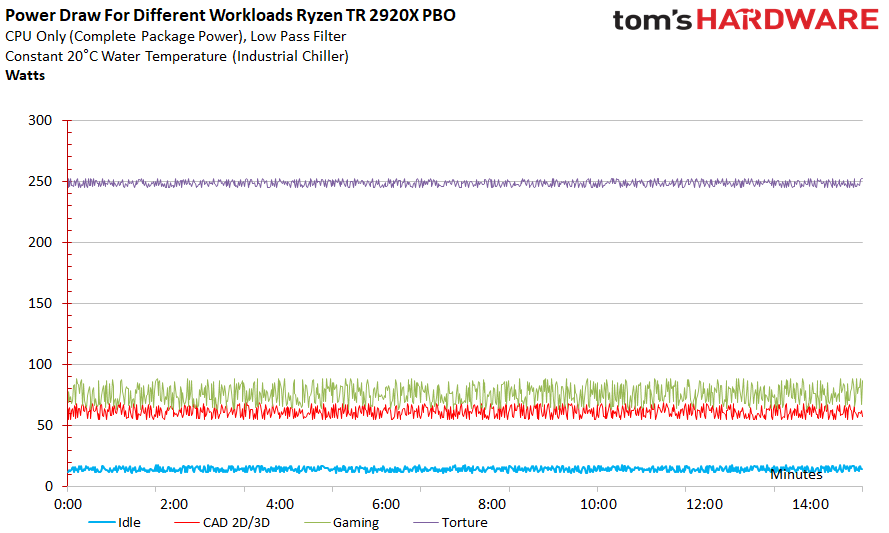
MORE: Best CPUs
Get Tom's Hardware's best news and in-depth reviews, straight to your inbox.
MORE: Intel & AMD Processor Hierarchy
MORE: All CPUs Content

Paul Alcorn is the Editor-in-Chief for Tom's Hardware US. He also writes news and reviews on CPUs, storage, and enterprise hardware.
-
Peter Martin Threadripper and Cake or Death!Reply
I'll have the Threadripper please.
Very well! Give him Threadripper!
This would be ideal for me, but it is pricey for now. -
1_rick Basin Falls may be soldered, but considering that the solder in the 9000-series doesn't seem to do as much as people had hoped, we should be prepared for there not to be a lot of OC headroom.Reply -
kinggremlin If you can't afford it, you don't need it. Anyone who can make actual use of this CPU is using it in a business which is generating the money necessary to pay for it.Reply -
g-unit1111 Reply21441427 said:If you can't afford it, you don't need it. Anyone who can make actual use of this CPU is using it in a business which is generating the money necessary to pay for it.
Exactly, if I were in a business to generate content I would take the 24 core TR4 CPU over the 18 core Intel equivalent for less money any day of the week. Not everything is made to play games on it. -
Dorian Kunch Why he is the internet IT god, bow to it it it it one one one oneReply
Give it the Threadripper.
Give it! -
Peter Martin I would be able to make some money with that for sure. fine, now where is that business plan?Reply
